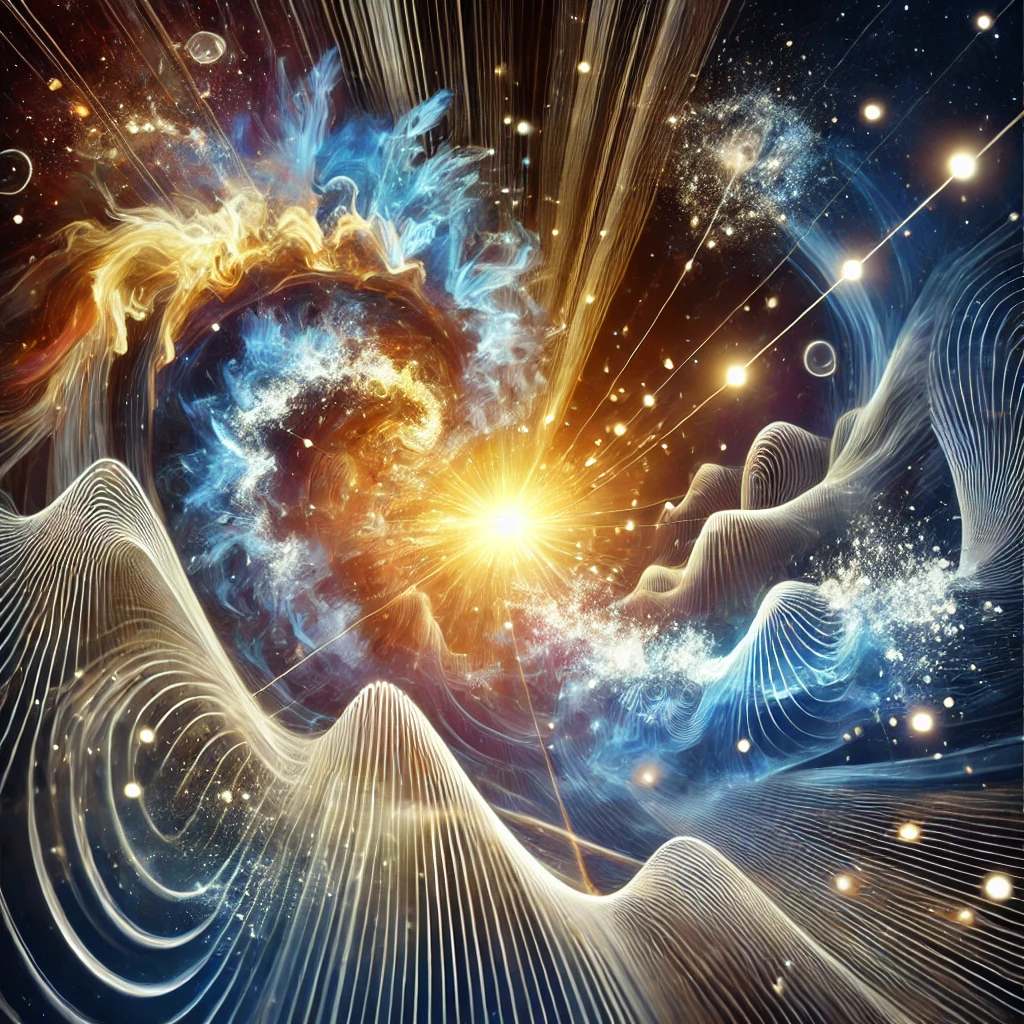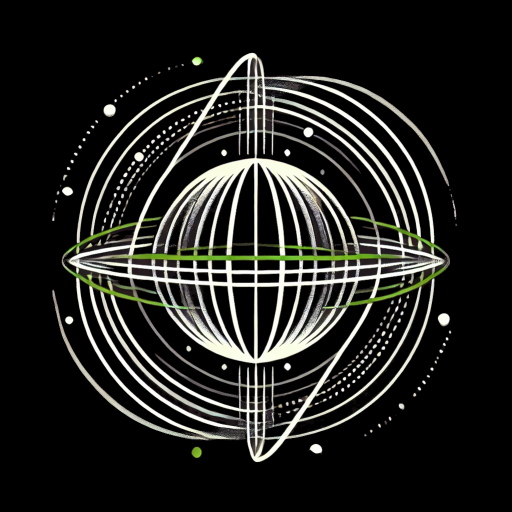
The Nature of the First Movement: An Imbalance in the Field
In Vibrational Field Theory, the universe begins not with a single, dense point as described in the Big Bang theory, but with a subtle first movement—a small disturbance or fluctuation within the field itself. Before this first movement, the field might have been in a state of perfect balance or stillness. This equilibrium was stable, but once the first movement occurred, it created a ripple effect, setting off a chain reaction that expanded into the universe we observe today.
How the First Movement Works
Imagine the universe as a calm, infinite ocean, representing the universal vibrational field. Initially, the surface is smooth and undisturbed. Then, something—whether a divine influence, quantum fluctuation, or some other force—disturbs this calm surface. This creates a ripple, much like what happens when a stone is dropped into water. However, in this case, the ripple doesn’t simply fade; it amplifies, growing larger and more complex as it spreads throughout the field.
- Small Fluctuation, Big Consequences: The first movement is a tiny fluctuation, but because of the field’s nature, this fluctuation doesn’t remain small. It grows and spreads, organizing energy into wave patterns that eventually form matter, energy, and the laws of physics. The simplicity of the initial fluctuation leads to the complexity of galaxies, stars, planets, and life over time.
- Self-Amplifying Process: Once the first movement occurs, the energy within the field feeds back into itself, causing the fluctuation to grow stronger and more structured. This self-amplifying process is what allows a tiny initial disturbance to become the vast, structured universe we see today.
Vibrational Instability as the Source of Creation
The key to understanding the first movement is the idea of vibrational instability. Before the first movement, the field may have been in a stable equilibrium. However, even in equilibrium, small fluctuations are always possible. The first movement represents a moment when this balance was tipped, causing a chain reaction of instability. Instead of returning to equilibrium, the fluctuation amplifies, creating ripples that grow and spread throughout space and time.
- Building the Universe from Vibrations: As the field ripples and vibrates, different regions experience different energy densities. These vibrational differences eventually give rise to the basic building blocks of matter, such as quarks, electrons, and photons. Over time, as these vibrations interact and organize, they form more complex structures, such as atoms, stars, and galaxies.
What Caused the First Movement?
The exact cause of the first movement is a matter of interpretation, and Vibrational Field Theory offers a flexible framework for exploring different possibilities. Below are two primary explanations for the first movement.
1. Spontaneous Quantum Fluctuation
One possibility is that the first movement arose naturally as a spontaneous quantum fluctuation. In quantum physics, fluctuations in energy occur even in a vacuum, meaning that a perfectly balanced field could still experience small, random disturbances.
- Random Emergence of Imbalance: In this view, the first movement happened spontaneously, due to the inherent uncertainty in quantum systems. This random fluctuation would have broken the symmetry of the field, creating an imbalance that initiated the expansion of the universe. Over time, this initial ripple would have grown into the complex universe we observe today.
- Cosmic Inflation: This idea connects to the concept of cosmic inflation, where the universe expanded rapidly from a tiny quantum fluctuation. In Vibrational Field Theory, the rapid expansion can be seen as the amplification of the initial vibrational instability, spreading out and organizing into galaxies, stars, and solar systems.
2. Divine or Higher Consciousness Intervention
Another possibility is that the first movement was not random but instead intentionally caused by a higher force or divine intervention. In this view, the initial disturbance in the field was an act of creation, initiated by a divine source or some greater intelligence.
- Intentional Creation: In this interpretation, the first fluctuation represents the divine will or higher consciousness setting the universe into motion. The field itself could be an extension of this divine presence, and the ripple effect was the first step in the unfolding of the universe. Every subsequent wave, particle, and force is a manifestation of this original divine movement.
- Ongoing Divine Influence: If the first movement was caused by a divine force, then the continued evolution of the universe—its expansion, the formation of galaxies and stars, and the emergence of life—can be seen as part of a divine plan, with the initial movement continuously influencing the structure of reality.
The Universe’s Evolution: From First Movement to Cosmic Structures
Once the first movement occurs, the ripples in the field begin to interact, merge, and amplify. These interactions lead to the formation of the universe’s basic structures. Here’s how this process unfolds:
1. Matter Formation
As the initial ripple spreads, the energy in the field organizes itself into more concentrated patterns. These concentrated regions of energy eventually become the particles we know in physics, such as quarks, electrons, and protons. These particles are essentially localized vibrations in the field, which stabilize into matter.
- The First Atoms: As the field continues to expand and cool, the first atoms form from the vibrations of protons, neutrons, and electrons. These atoms begin to interact through electromagnetic forces, leading to the creation of clouds of gas and the earliest forms of matter.
2. Gravitational Interactions and the Formation of Stars
As matter begins to clump together due to gravitational vibrations, stars form. These stars are massive concentrations of energy and matter, driven by the gravitational ripples in the field. The first stars ignite through nuclear fusion, converting hydrogen into helium and radiating energy throughout the universe.
- Vibrations Creating Celestial Bodies: Stars, galaxies, and planets all form as a result of the self-organizing vibrations in the field. The initial fluctuation continues to ripple outward, creating the complex structures we see today.
3. The Solar System’s Birth
Billions of years after the first movement, these ripples lead to the formation of the solar system. The Sun forms at the center as a massive vibrational node, while the planets emerge from the self-organizing vibrations in the surrounding disk of gas and dust. The orbits of the planets, moons, and other bodies are harmonic expressions of the initial ripple, balancing the gravitational forces created by the Sun and other massive objects.



Leave a Reply